4 tips from expert hikers on how to hit the trails early in L.A.
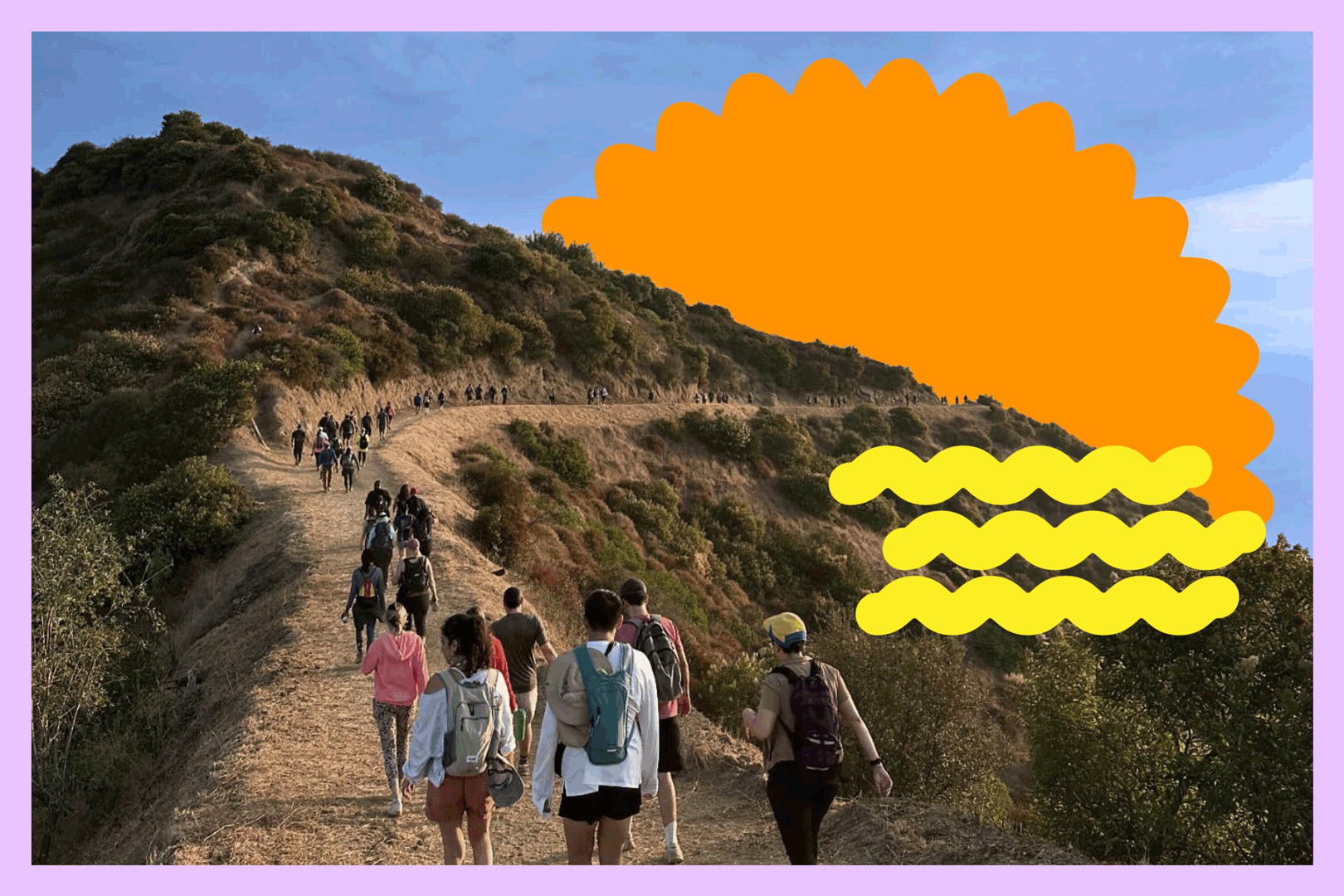
- Share via
I’ve never regretted getting up early for a hike.
I had that realization on my favorite trail near Pasadena last week, as I breathed in the cool morning air, watching as sunbeams filtered through the tree leaves above. A chilly breeze blew past, and it felt like someone had turned on the AC.
You are reading The Wild newsletter
Sign up to get expert tips on the best of Southern California's beaches, trails, parks, deserts, forests and mountains in your inbox every Thursday
You may occasionally receive promotional content from the Los Angeles Times.
I don’t consider myself a morning person. When I was a teenager, my family would jokingly advise: “Don’t talk to Jaclyn until they’ve had their coffee.” But recently, I’ve found myself willingly springing out of bed by 6 a.m. to hit the trails. I grab my coffee (still extremely necessary), my trusty hiking companion Maggie May and head out the door. We are back to the car by 8 a.m., before it starts getting hot.
I know, I know. Last week, I exalted the joys of hiking at night, especially under the full moon. Well, dear Wilders, when it’s this hot out, I would recommend doing both.
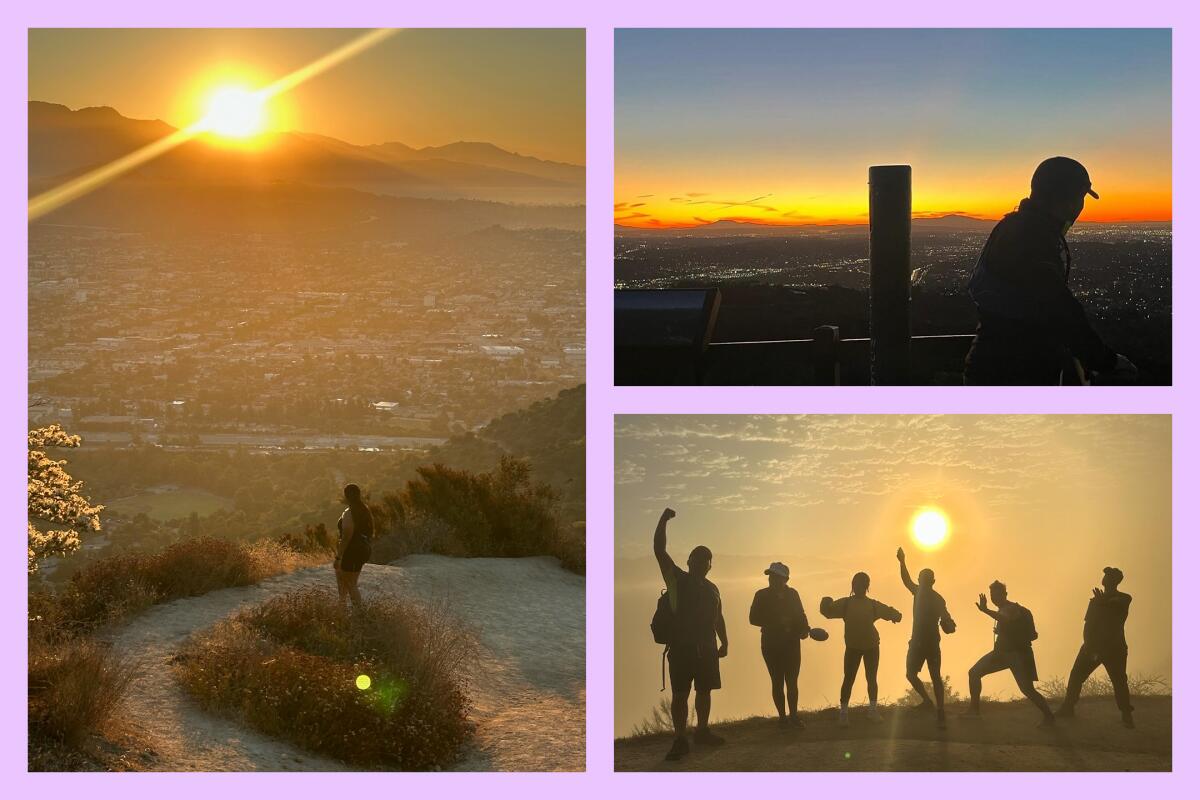
That being said, I know that peeling yourself from bed in the early hours of the morning can be challenging. Especially when you’re running on low sleep and scrambling to manage work and family responsibilities. So I reached out to a few hikers who wake up much earlier than me to glean some wisdom for how to best motivate oneself to stick to a pre-dawn routine. Below they share their tips and tricks for remaining consistent. Because early-morning adventures make the stress of life more tolerable.
1. Set multiple alarms and pack the night before
Omar Covarrubias, the organizer behind L.A. morning hiking group, the 5 AM Crew, suggests setting four alarms.
“It’s that easy — the first three are the snooze ones, and it’s that last ‘Oh s–! I’m late’ one,’” said Covarrubias, who can be found three times a week on an early-morning hike from the Hogback Trail to Mt. Hollywood at Griffith Park. “That’s the one that gives you the 45 or 30 minutes to quickly brush your teeth, put your pants on, get your water bottle or snacks” and leave in time.
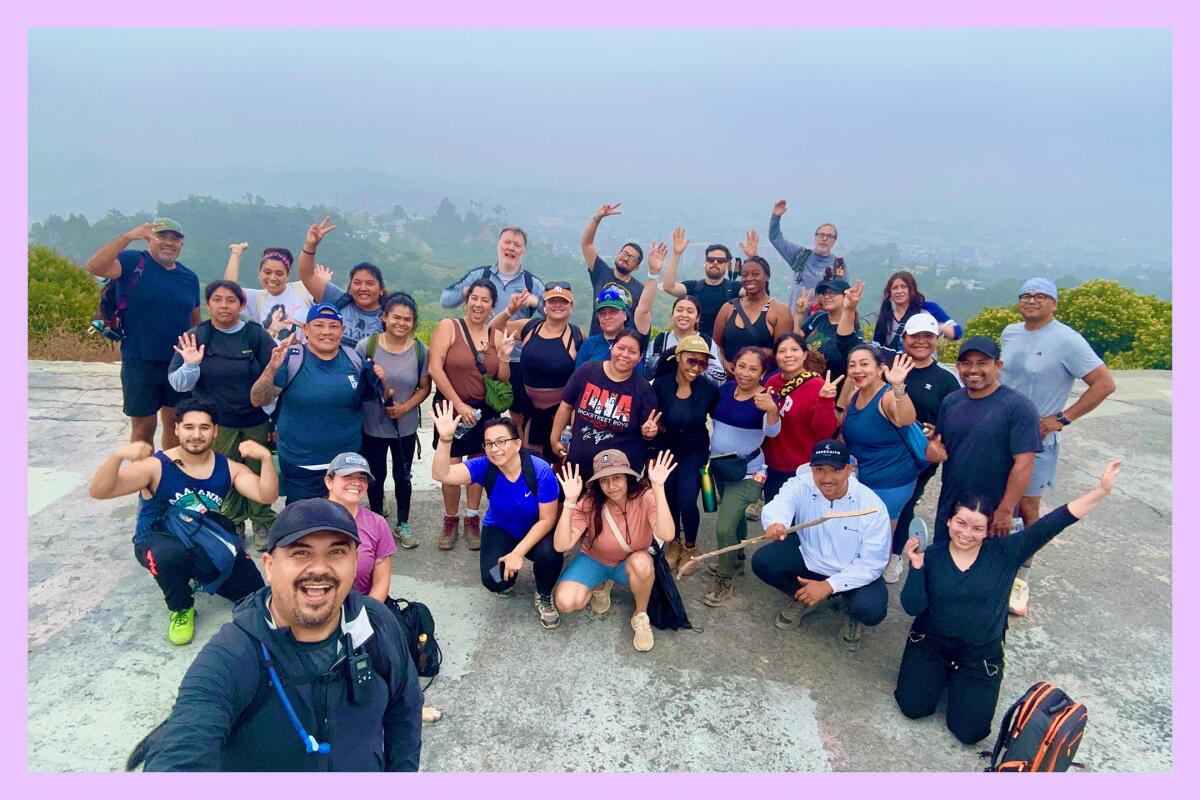
I’ve also found it’s helpful to gather everything I need the evening before. It saves time and puts me into the mentality that I am absolutely going to hike the next morning.
I fill up my water reservoir and bottles and throw snacks in my bag, along with whatever else I need for the hike. And it might seem silly, but I put my socks in my boots, so I don’t wake up my wife by stumbling through the bedroom in the dark looking through my (admittedly disorganized) dresser drawers.
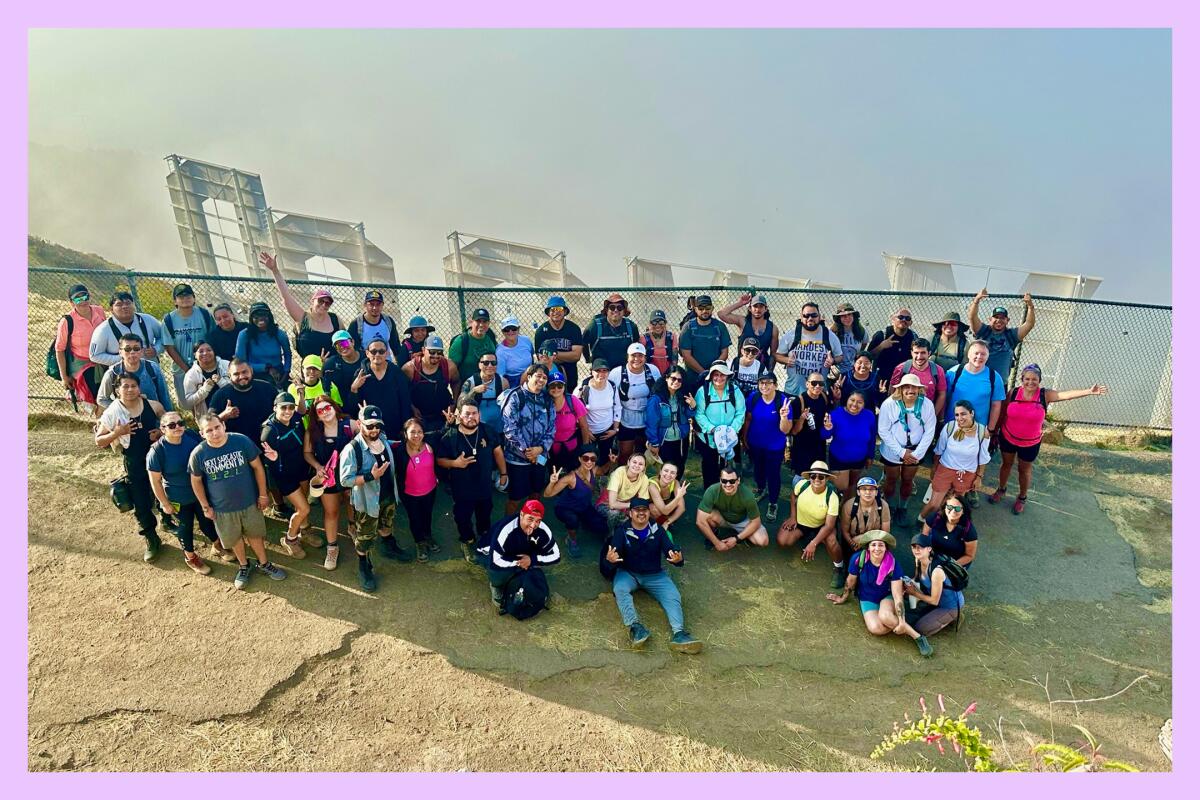
2. Hike with others
As much as I love a solo hike, hiking with friends or a group has its benefits. Studies show that working out in groups can lead to improved health, and through the shared goals of the group, a more consistent exercise routine for its members.
Maggie, my 12-year-old dog, is my accountability partner. I see how happy our early-morning hikes make her. It’s impossible for me to remain in bed when that image pops into my mind. Plus, swimming in the river is good for her joints.
Jessica Galvan, of Alhambra, told me that hiking with the 5 AM Crew has been a big reason she’s remained consistent in her morning hiking habit.
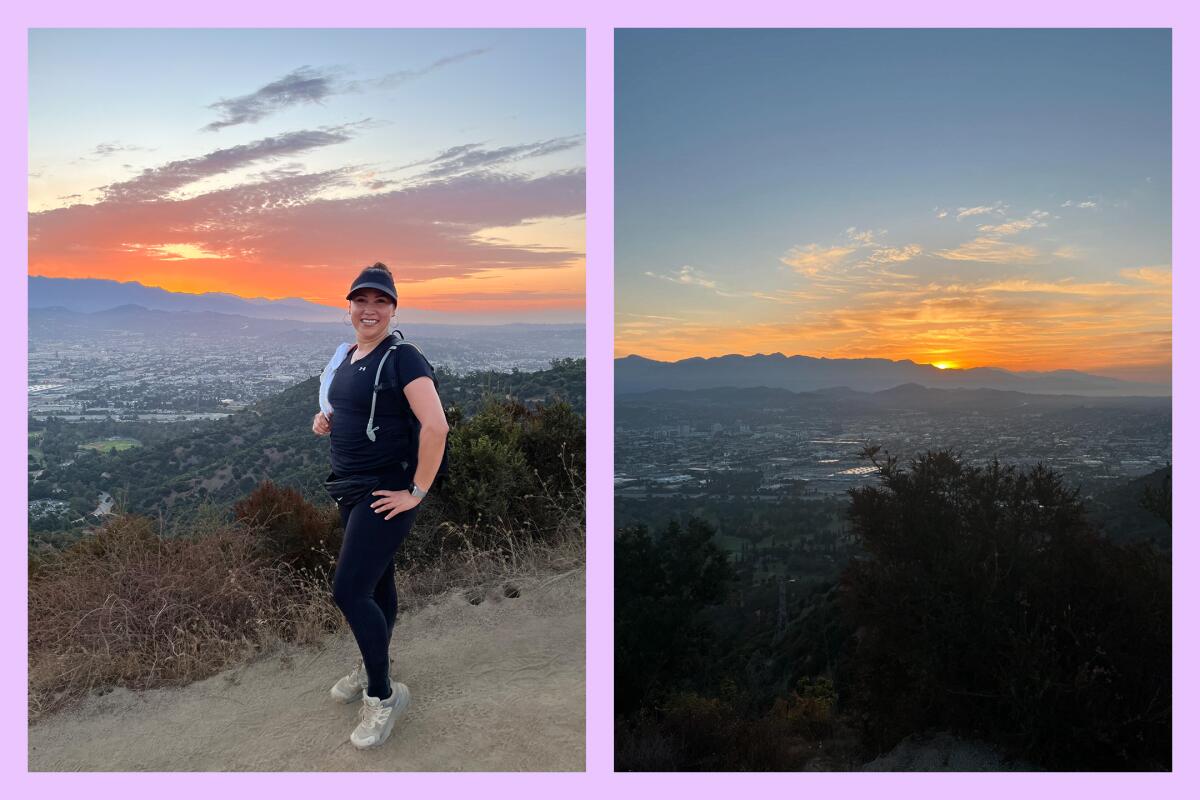
“When you’re done, you’re glad you did it,” Galvan said. “And you even tell the others, ‘I almost didn’t come today. I wasn’t feeling well, but I pushed myself, and I’m so glad I did because I feel great.’ It’s the friendships, the views are beautiful and everyone motivates each other.”
I should note: One of the worst hiking experiences I’ve ever had was with a local hiking group. I went to make friends. They were there to exercise. In sum: we didn’t gel. So please research the group beforehand, and consider calling or texting with the group leader to make sure it’s the right fit.
3. Set your intention
For too long, I thought you had to suffer through exercise. I also thought I had to go fast on a hike, and that I had to reach the top. And I’d feel bad if I didn’t.
This is where intention setting comes in. I find being conscious of what I want from a hike can keep me from getting attached to some other goal post. Sometimes, I tell myself that I would actually like to go fast. Other times, I tell myself that my goal is not miles but is to just be outside. When organizing group hikes, I usually tell my friends in the invite something like, “This hike is not for exercise. It’s to be outside in nature together.”
I generally do this as I’m packing my bag the night before. I think, “What’s my goal for tomorrow?” or “What am I hoping to get out of this?” Sometimes, that conversation with myself has led me to switch where I hike.
Why set an intention? I’ve found that thinking about the positives — especially when it’s a new habit — can help me remember why I wanted to do this in the first place and why I decided this was an important change to make in my life. Your intention is a great response whenever that sleepy little voice in the back of your head yawns and screams, “Why are we doing this?!”
This ritual is a helpful motivator for Covarrubias, who gains about 1,300 feet of elevation with his hiking group on Tuesdays and Thursdays.
“I tell myself, ‘Hey, today I’m going hiking, I’m not doing anything else,’ and I put blinders in my head,” Covarrubias said. “I say my intention for the day is to get to the top of the mountain, whatever that looks like.”
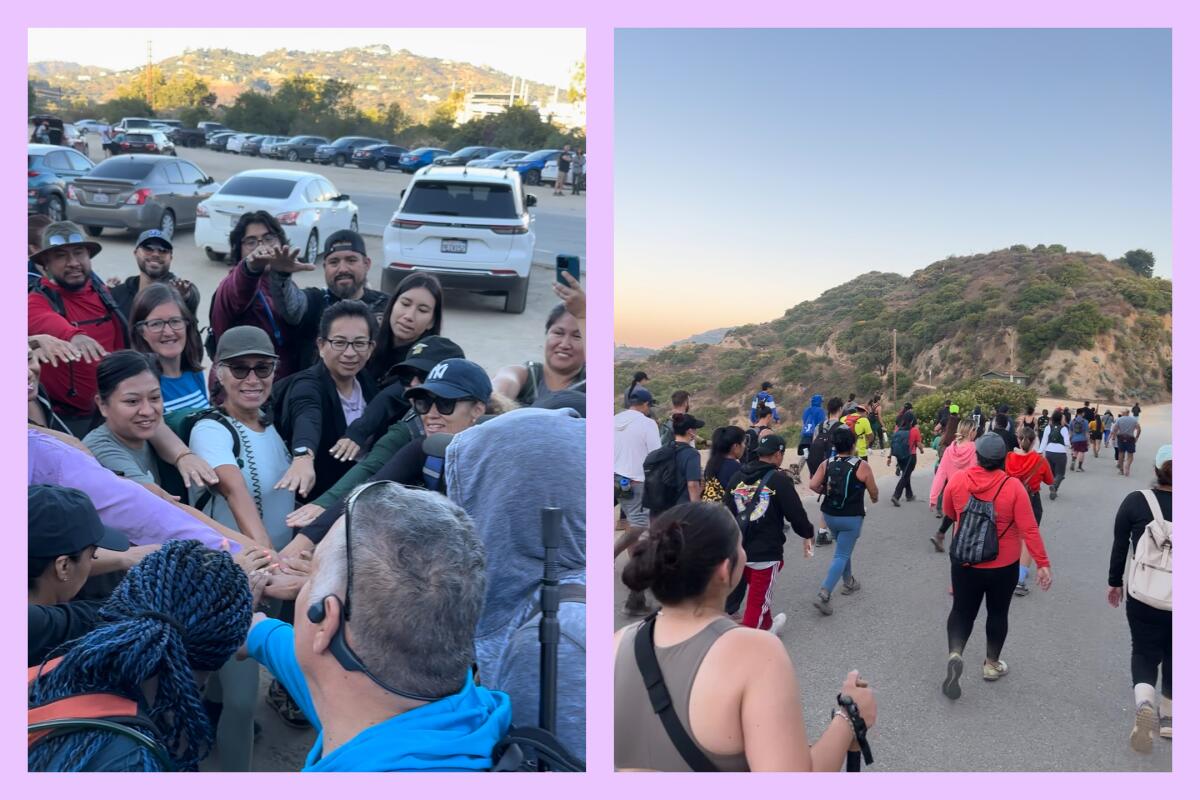
Covarrubias says he has also heard from members of the 5 AM Crew that they gained clarity on the trail.
“It almost feels like a rebirth — you start off in the dark and come back in the light,” he said.
In other words, sometimes your intention might find you!
4. Listen to your body
In any new exercise habit, you have to balance pushing yourself with knowing when you need to rest.
Tiffany Tharpe, cofounder of Black Girls Trekkin, usually leaves for a hike by 5:30 a.m. Tharpe loathes hiking in the heat and wants to keep her pup safe.
But sometimes, Tharpe just isn’t feeling it, and she’s OK with that. She’s made a game-time decision to stay in bed several times.
“I know to listen to my body when it wants to take a day to rest and recuperate, and the trail will be there for another time,” Tharpe said. “If you force yourself, you may not enjoy the hike too much or can risk injury.”
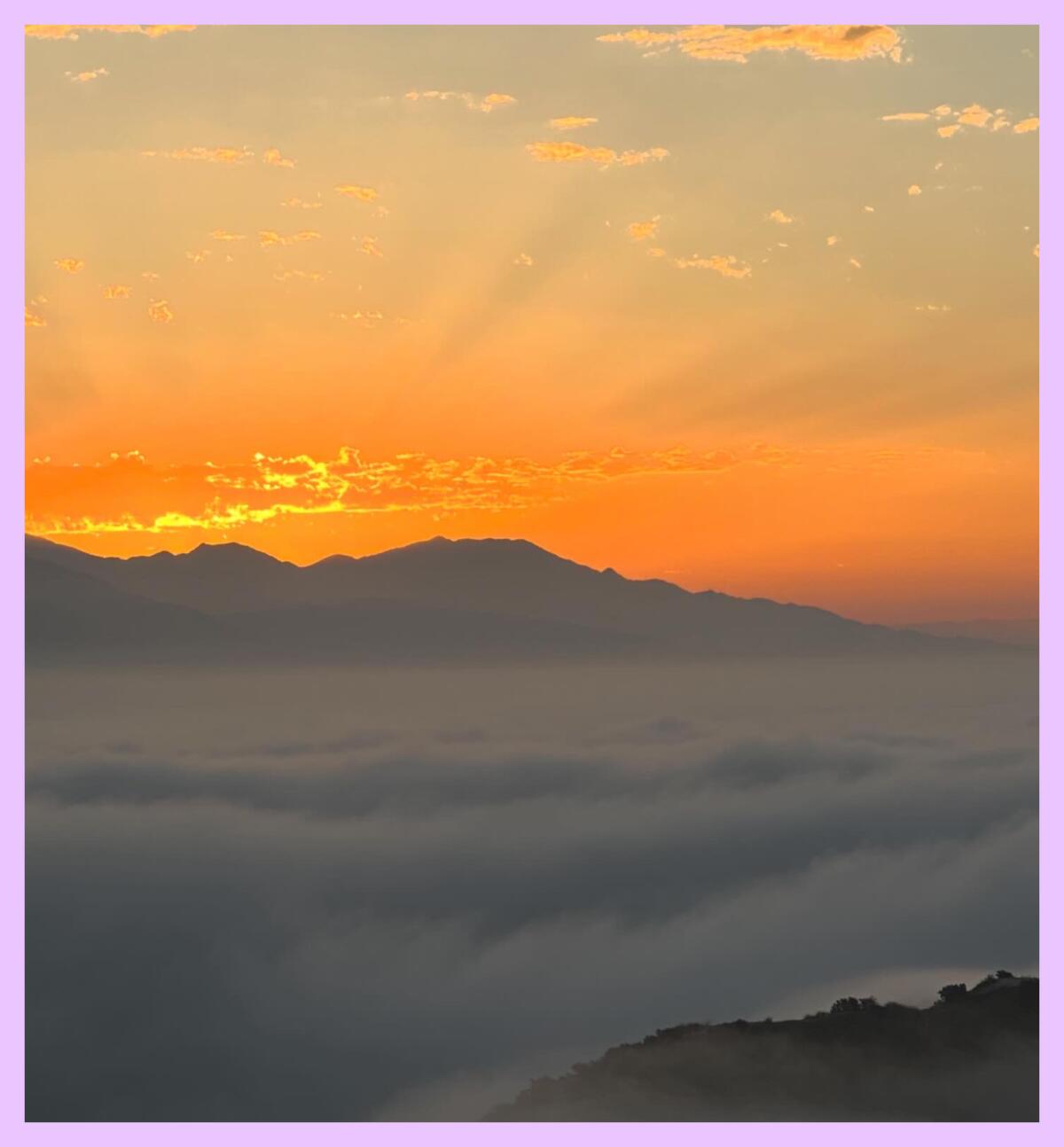
Galvan agrees and suggests hikers take that advice into account on the trail, too.
“If [you are] starting to feel uneasy, like dizzy, stop, sit down, drink some water, have a snack and just give yourself a few minutes and see if you can keep going,” Galvan said. “And maybe you need to turn back, and it’s OK. There’s no shame in that.”

3 things to do
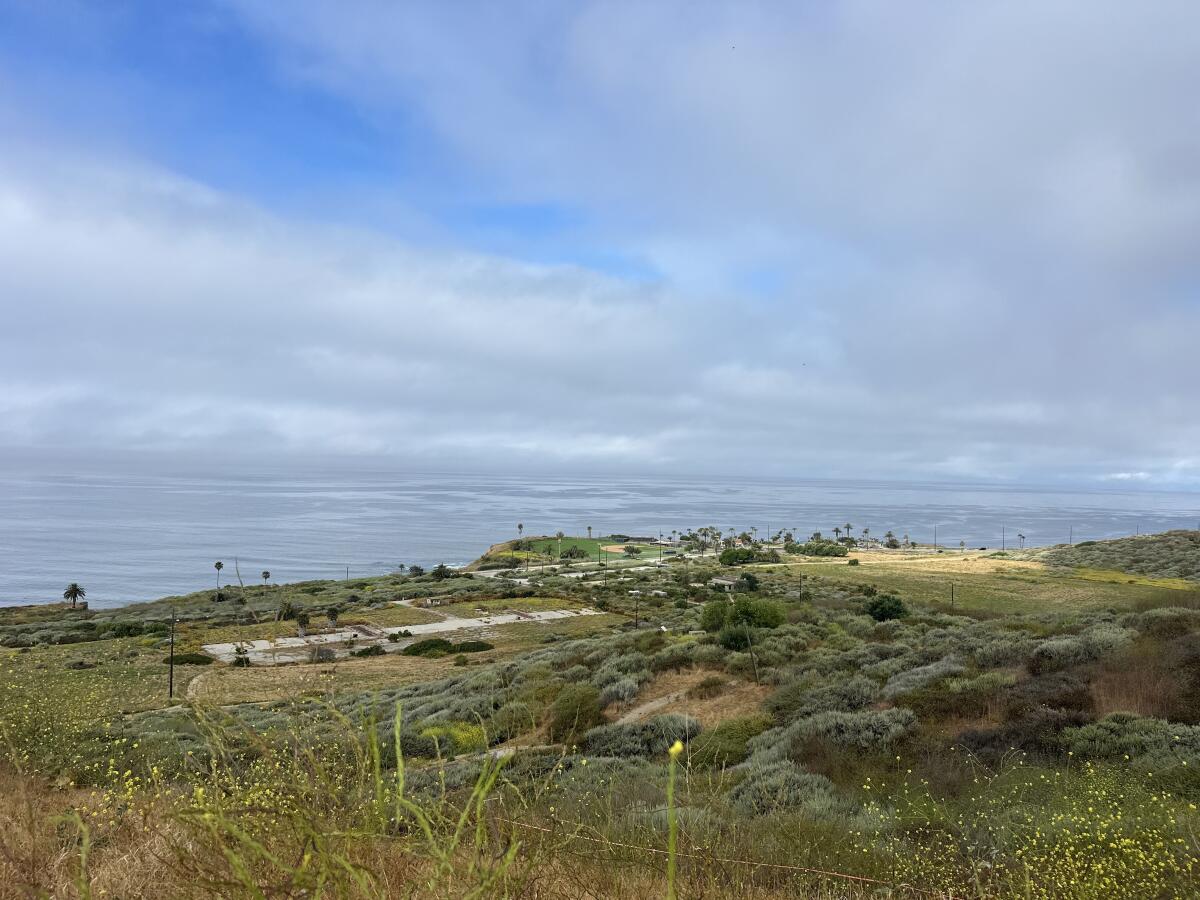
1. Hike near the San Pedro coast
Join urban ecologist Courtney McCammon on a hike from 8 to 10 a.m. Saturday through White Point Nature Preserve, a 102-acre coastal park in San Pedro. Once owned by the military and a Nike missile site, the park’s trails feature wildflower grasslands, succulents and other native plants. Workers have planted more than 90,000 plants to restore the park to some of its pre-development glory. Learn more about the hike at the L.A. Parks Instagram page.
2. Bike through the San Fernando Valley
Join the Los Angeles Valley Arts and Community Alliance and a Radical Adventure Riders local chapter on Sunday for a slow-paced evening bike ride down the G Line Bikeway. Participants should arrive at the Van Nuys G-Line station by 7:30 p.m. to head out by 7:45 p.m. The route will end with a film screening at North Hollywood Park. Reserve a spot at eventbrite.com.
3. Restore the habitat along the L.A. River
Join Friends of the L.A. River from 8 to 11 a.m. Saturday to remove invasive mustard in the Sepulveda Basin Wildlife Reserve. The California Native Plant Society will be on hand to teach why mustard is so dreadful to our ecosystem. After the group finishes pulling weeds, the San Fernando Valley Audubon Society will lead walks around the reserve, binoculars provided, to share about the native birds that call the reserve home. Volunteers should bring a refillable water bottle, snacks and sunscreen. You should wear closed-toe shoes, long pants and long sleeves. The organization will provide gloves and weeding tools, but you are welcome to bring your own. Register at eventbrite.com.

The must-read
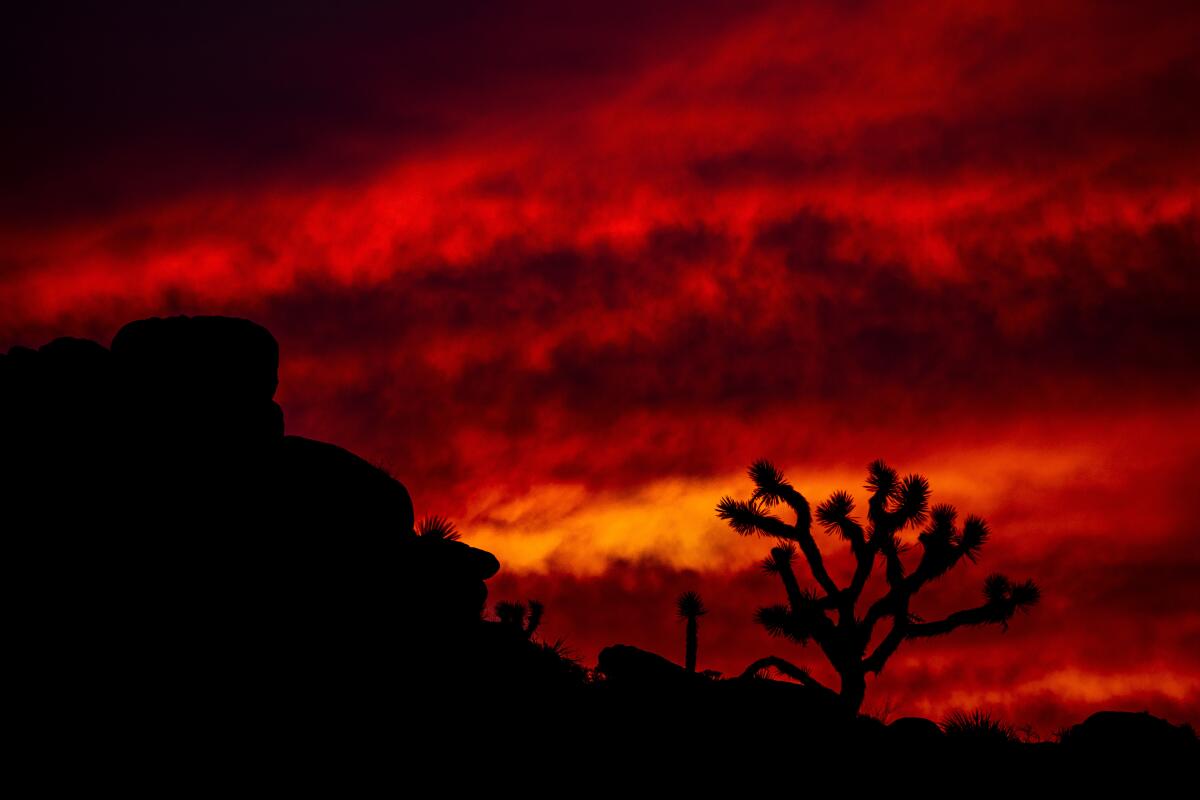
Few things are more iconic to the California desert than the Joshua tree. Unfortunately, these “spiky, Seussian succulents” are already under threat because of the worsening effects of climate change, reports Times environment reporter Alex Wigglesworth. A study found that, because of big swings in precipitation and warmer winters, Joshua trees are flowering more often. That’s great for our Instagram pages, but bad for the species. It could mean that seedlings, which need more water to thrive, aren’t surviving as frequently as prior years. The study’s author, Jeremy Yoder, associate professor of biology at Cal State Northridge, puts a fine point on why we must save these gorgeous succulents: “If we protect Joshua trees, we’re probably protecting this whole category of things that live in the desert.”
Happy adventuring,

P.S.
Even though it doesn’t feel like it, sweater weather is around the corner. The last day of summer is in a month! I wrote this guide to visiting L.A. County lakes in hopes that it’ll help you have a great Labor Day weekend and explore a new place. While out reporting, I swam and kayaked in local lakes, and hiked around them, too. I plan to go back, including to rent a surrey, which you will have to click the link to learn more about. If you enjoy fishing, or are fishing curious, this list is for you!
For more insider tips on Southern California’s beaches, trails and parks, check out past editions of The Wild. And to view this newsletter in your browser, click here.
Sign up for The Wild
We’ll help you find the best places to hike, bike and run, as well as the perfect silent spots for meditation and yoga.
You may occasionally receive promotional content from the Los Angeles Times.




